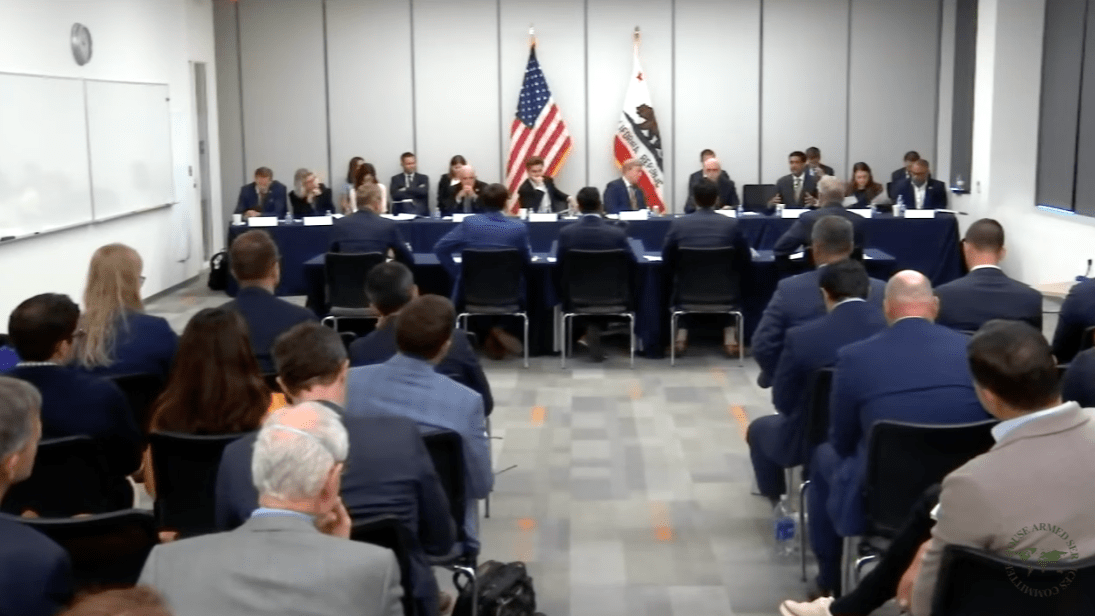AUVSI Submits Comments to the House Armed Services Committee on Strengthening the Defense Industrial Bas
Key Focus on Supporting Autonomous Systems and U.S. Navy Readiness
The Association for Uncrewed Vehicle Systems International (AUVSI) has submitted formal comments to the House Committee on Armed Services, responding to the recent hearing on the “Findings and Recommendations of the Commission on the National Defense Strategy.” The letter, addressed to Chairman Mike Rogers and Ranking Member Adam Smith, emphasizes the need for large-scale support of the U.S. defense industrial base and increased integration of autonomous and uncrewed systems within the Department of Defense (DoD) and U.S. Navy.
In the comments, AUVSI President and CEO Michael Robbins highlights the challenges faced by small and medium-sized companies developing dual-use technologies. He also points out the ‘say-do’ gap within the DoD, where actions often fail to meet stated goals.
Recommendations for Strengthening the Industrial Base
AUVSI’s letter identifies significant challenges in the U.S. defense industrial base, particularly in scaling production of uncrewed systems. Robbins writes, “DoD’s Replicator initiative has set forward a clear process that has created a demand signal for uncrewed systems and energized private sector response to production needs.” The Replicator initiative, introduced by the DoD, aims to accelerate the production of autonomous systems, signaling a shift toward quicker innovation and deployment of advanced technology.
However, the letter stresses that unpredictable defense budgets and a lack of consistent orders have hampered the ability of companies to scale production and maintain workforce capacity. According to Robbins, this situation is putting both the defense industrial base and the warfighter at risk. He states, “Without opportunity for return on investment, innovative companies who could support the warfighter with cutting-edge technologies will seek investment in more sustainable lines of business.”
To address these issues, AUVSI made three key recommendations to Congress and the DoD:
- Increase funding for uncrewed systems: Congress should ensure that DoD places large-scale orders of autonomous and uncrewed systems.
- Integrate uncrewed systems into the Navy: The U.S. Navy must incorporate autonomous vessels into its fleet to maintain maritime readiness.
- Evolve the Replicator initiative: The DoD should develop the Replicator initiative into an agile acquisition process to deliver capabilities rapidly to the warfighter.
Addressing the Navy’s Future Readiness
In addition to discussing the defense industrial base, AUVSI supports the Commission’s recommendation to expand the U.S. Navy’s use of autonomous systems. Robbins acknowledges that while the U.S. leads in science and technology innovation, the Navy must rapidly integrate uncrewed vessels into its operational concepts to meet future challenges. He emphasizes that the Replicator initiative is essential for this transformation.
“AUVSI is hopeful that Replicator will set a new standard way of doing business within DoD and will evolve into an agile acquisition process that accelerates capabilities to the warfighter and significantly alters our adversaries’ aggression calculus,” Robbins writes.
This forward-thinking approach would not only enhance naval capabilities but also stimulate the U.S. shipbuilding industry, creating opportunities for both U.S. and allied companies.
AUVSI’s submission underscores the importance of immediate action by Congress and the DoD to fund, acquire, and deploy uncrewed systems at scale. By aligning defense industry efforts with military needs, AUVSI argues that the U.S. can maintain strategic deterrence, respond to crises more effectively, and sustain technological superiority over adversaries.
Read more:
Miriam McNabb is the Editor-in-Chief of DRONELIFE and CEO of JobForDrones, a professional drone services marketplace, and a fascinated observer of the emerging drone industry and the regulatory environment for drones. Miriam has penned over 3,000 articles focused on the commercial drone space and is an international speaker and recognized figure in the industry. Miriam has a degree from the University of Chicago and over 20 years of experience in high tech sales and marketing for new technologies.
For drone industry consulting or writing, Email Miriam.
TWITTER:@spaldingbarker
Subscribe to DroneLife here.


